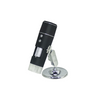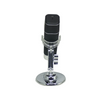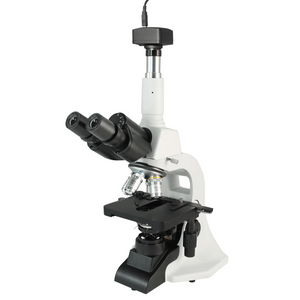Instruction Manual
Software Download
DM02040111 Software.zip
Quick Overview
Finite. Total Magnification: 1000X. Illumination Type: LED Reflection Light. USB 2.0 /Wi-Fi. Windows /7/8/10. Input Voltage: DC 5V.
Software Download
DM02040111 Software.zip
Quick Overview
Finite. Total Magnification: 1000X. Illumination Type: LED Reflection Light. USB 2.0 /Wi-Fi. Windows /7/8/10. Input Voltage: DC 5V.
DM02040111 Digital Microscope
Optical System Specifications
| Optical System | Finite |
| System Optical Magnification | 1000X |
| Total Magnification | 1000X |
Flexible Arm
| Base Type | Table Base |
| Base Shape | Round |
Microscope Illumination System
| Illumination Type | LED Reflection Light |
USB Digital Camera
| Camera Resolution | 1920x1080 |
| Camera Signal Output Port | USB 2.0 /Wi-Fi |
| Transmission Frame Rate | 30fps |
| Language | English/Chinese (Simplified) |
| System Requirement | Windows /7/8/10 |
| Driver Installation | Manual |
Power Supply
| Input Voltage | DC 5V |
Other Parameters
| Surface Treatment | Plastic Spray Coating |
| Material | Plastic (ABS) |
| Color | Black |
| Net Weight | 0.15kg (0.33lbs) |
Series
| DM0204 | DM02040111 |
Technical Info
Instructions
Digital MicroscopeClose Λ
| Digital microscope is the general term for microscope that can convert an optical image into a digital image, and usually does not specifically refer to a certain type of microscope. It should be noted however that most microscopes can be mounted with cameras and display devices to change to digital microscope. Microscopes in the visible range, from the digital imaging point of view, all use CCD or CMOS sensors to image the optical signal as an electric signal on a computer or display. However, the difference between various kinds of digital microscopes mainly comes from the optical microscope itself, so it is necessary to look at the imaging effect and function of the optical part in order to select the type of digital microscope. From the classification point of view, digital microscopes can be divided into: digital biological microscopes, digital stereo microscopes, etc. It should be noted that due to the variety of lenses, ordinary lenses or microscopes, if mounted with a digital camera, can all become a digital microscope. At present, the trend of digital microscopes is not only to present simple digital images, but to collect, process and analyze images through back-end software, especially for image measurement, comparison, judgment, and large-format scanning and splicing, and three-dimensional synthesis and so on, these aspects have been widely developed and applied. |
FiniteClose Λ
| Microscopes and components have two types of optical path design structures. One type is finite optical structural design, in which light passing through the objective lens is directed at the intermediate image plane (located in the front focal plane of the eyepiece) and converges at that point. The finite structure is an integrated design, with a compact structure, and it is a kind of economical microscope. Another type is infinite optical structural design, in which the light between the tube lens after passing the objective lens becomes "parallel light". Within this distance, various kinds of optical components necessary such as beam splitters or optical filters call be added, and at the same time, this kind of design has better imaging results. As the design is modular, it is also called modular microscope. The modular structure facilitates the addition of different imaging and lighting accessories in the middle of the system as required. The main components of infinite and finite, especially objective lens, are usually not interchangeable for use, and even if they can be imaged, the image quality will also have some defects. The separative two-objective lens structure of the dual-light path of stereo microscope (SZ/FS microscope) is also known as Greenough. Parallel optical microscope uses a parallel structure (PZ microscope), which is different from the separative two-object lens structure, and because its objective lens is one and the same, it is therefore also known as the CMO common main objective. |
System Optical MagnificationClose Λ
| The magnification of the objective lens refers to the lateral magnification, it is the ratio of the image to the real size after the original image is magnified by the instrument. This multiple refers to the length or width of the magnified object. System optical magnification is the product of the eyepiece and the objective lens (objective lens zoom set) of the optical imaging part within the system. Optical magnification = eyepiece multiple X objective lens/objective lens set The maximum optical magnification of the microscope depends on the wavelength of the light to which the object is illuminated. The size of the object that can be observed must be greater than the wavelength of the light. Otherwise, the light cannot be reflected or transmitted, or recognized by the human eye. The shortest wavelength of ultraviolet light is 0.2 microns, so the resolution of the optical microscope in the visible range does not exceed 0.2 microns, or 200 nanometers. This size is converted to the magnification of the microscope, and it is the optical magnification of 2000X. Usually, the compound microscope can achieve 100X objective lens, the eyepiece is 20X, and the magnification can reach 2000X. If it is bigger, it will be called "invalid magnification", that is, the image is large, but the resolution is no longer increased, and no more details and information can be seen. |
Total MagnificationClose Λ
| Total magnification is the magnification of the observed object finally obtained by the instrument. This magnification is often the product of the optical magnification and the electronic magnification. When it is only optically magnified, the total magnification will be the optical magnification. Total magnification = optical magnification X electronic magnification Total magnification = (objective X photo eyepiece) X (display size / camera sensor target ) |
Flexible ArmClose Λ
| Flexible arm is an arm or stand that imitates the human arm. It is a combination of several mechanical arm joints to complete the horizontal and vertical movement and freely adjust the focus position of the microscope. Flexible arm allows the microscope to move flexibly and freely over a wide range, and is also suitable for viewing larger objects. The fixing method of the arm is usually optional, with strong interchangeability. Below the observation of the microscope there is an empty workbench, which can be used to place various kinds of platforms, work operating tables, tools, etc., and can be freely combined into different working positions. In industrial places, most of the working positions are fixed. Sometimes, a lot of tools, equipment and instruments need to be placed in one working position. Because the microscope is relatively large in size and takes up also a relatively bigger space, and not convenient to move back and forth, therefore the flexible arm can be placed in a flexible position, and does not occupy the most commonly used workbench. When in use, the microscope can be moved over, and pushed to the side when not in use. This is very suitable for use in electronics factories, installation and maintenance, medical and animal anatomy, archaeology and other industries. Flexible arm generally does not have a fixed focusing device, and you can choose a variety of flexible accessories. When adjusting the height of the flexible arm, you need to use both hands at the same time, with one hand holding the microscope or the forearm of the stand, and the other adjusting the adjusting screw or spring mechanism that looses/tightens the arm. When releasing, pay attention to avoiding sudden sliding down. Because one needs to ensure the flexibility of the arm or stand, there are many locking buttons in all directions. After the necessary locking buttons are adjusted, it must be ensured that each knob is in locked state to avoid sliding, tilting, and flipping of the microscope, thereby damaging the microscope and the items on the workbench. Flexible arm has a mechanism of the hydraulic spring for adjusting the pre-tightening tension. When different microscopes weigh differently, these flexible arms can be adjusted to make the microscope more stable. |
USB Digital CameraClose Λ
| What the camera outputs are digital signals, which are output to the computer via the USB adapter. There are two kinds of popular USB adapters popular on the market, namely USB2.0 and USB3.0. Both kinds of adapters need different data lines to work. |
Camera ResolutionClose Λ
| Resolution of the camera refers to the number of pixels accommodated within unit area of the image sensor of the camera. Image resolution is not represented by area, but by the number of pixels accommodated within the unit length of the rectangular side. The unit of length is generally represented by inch. |
Camera Signal Output PortClose Λ
| Digital signals output: USB 2.0, USB3.0; 15 Pin VGA; Firewire Port; HDMI; VGA; Camera Link etc. Analog signal output: BNC; RCA; Y-C etc. In addition, some cameras store and output images in the form of a memory card. Usually, industrial cameras often have several output modes on one camera for convenience purposes. |
Transmission Frame RateClose Λ
| Frame rate is the number of output of frames per second, FPS or Hertz for short. The number of frames per second (fps) or frame rate represents the number of times the graphics process is updated per second. Due to the physiological structure of the human eye, when the frame rate of the picture is higher than 16fps, it is considered to be coherent, and high frame rate can make the image frame more smooth and realistic. Some industrial inspection camera applications also require a much higher frame rate to meet certain specific needs. The higher the resolution of the camera, the lower the frame rate. Therefore, this should be taken into consideration during their selection. When needing to take static or still images, you often need a large resolution. When needing to operate under the microscope, or shooting dynamic images, frame rate should be first considered. In order to solve this problem, the general industrial camera design is to display the maximum frame rate and relatively smaller resolution when viewing; when shooting, the maximum resolution should be used; and some cameras need to set in advance different shooting resolutions when taking pictures, so as to achieve the best results. |
PackagingClose Λ
| After unpacking, carefully inspect the various random accessories and parts in the package to avoid omissions. In order to save space and ensure safety of components, some components will be placed outside the inner packaging box, so be careful of their inspection. For special packaging, it is generally after opening the box, all packaging boxes, protective foam, plastic bags should be kept for a period of time. If there is a problem during the return period, you can return or exchange the original. After the return period (usually 10-30 days, according to the manufacturer’s Instruction of Terms of Service), these packaging boxes may be disposed of if there is no problem. |
| Packing | |
| Packaging Type | Carton Packaging |
| Packaging Material | Corrugated Carton |
| Packaging Dimensions(1) | 19.5x16.5x10.5cm (7.677x6.496x4.134″) |
| Inner Packing Material | Plastic Bag |
| Gross Weight | 0.35kg (0.77lbs) |
| Minimum Packaging Quantity | 1pc |
| Transportation Carton | Carton Packaging |
| Transportation Carton Material | Corrugated Carton |
| Transportation Carton Dimensions(1) | 19.5x16.5x10.5cm (8x7x5″) |
| Total Gross Weight of Transportation(kilogram) | 0.35 |
| Total Gross Weight of Transportation(pound) | 0.77 |




















